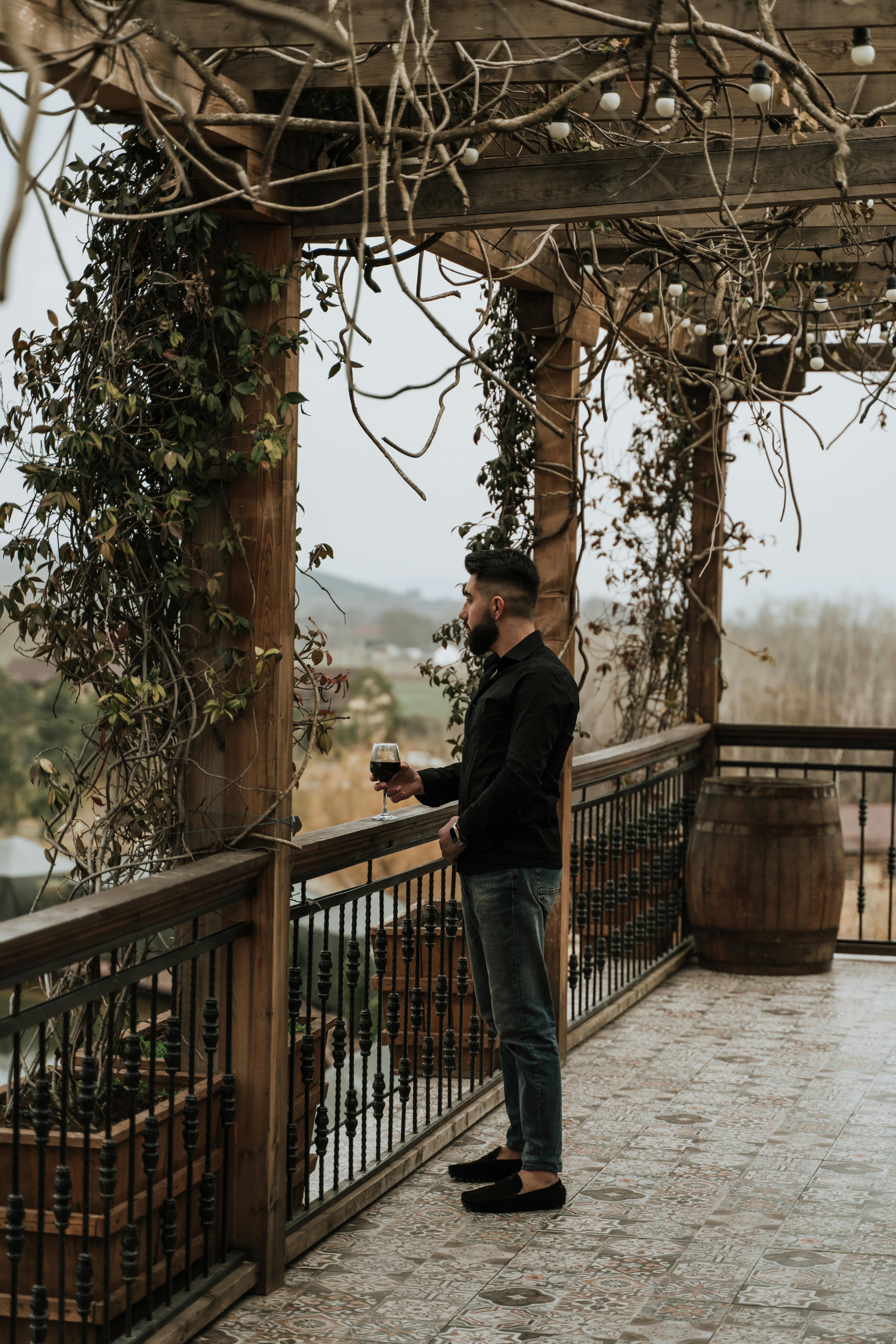So you’ve come to the realization that simply drinking wine isn’t enough – you want to truly experience it. But you’re not sure where to start or how to properly taste wine to fully appreciate its flavors and complexities. Well, fret no more! In this article, we will guide you through the art of tasting wine like a pro, exploring the steps and techniques that will help you unlock its hidden delights. Prepare to embark on a sensory journey that will enhance your wine-drinking experience and leave you with a newfound appreciation for this exquisite beverage.
Understanding the Basics
To truly appreciate and understand wine, it is important to know the basics. These fundamental steps will allow you to engage your senses and thoroughly evaluate the wine you are tasting. Here are a few things to consider:
Choose the right glass
Selecting the appropriate glass for wine tasting can greatly enhance your experience. The shape and size of the glass can optimize the aromas and flavors of the wine. Ideally, a tulip-shaped glass with a narrow rim is recommended for red wines, while a narrower and taller glass is preferred for white wines. These glasses help concentrate the aromas and allow for better swirling.
Check the temperature
The temperature at which wine is served can significantly impact its taste. Generally, red wines are best enjoyed at slightly cooler than room temperature, around 60-65°F (15-18°C), while white wines are typically served chilled at about 45-50°F (7-10°C). It is important to avoid serving wine too cold or too warm, as extreme temperatures can mask or alter the flavors.
Observe the color
Before tasting the wine, take a moment to appreciate its color. Hold the glass against a well-lit background and observe the hue and intensity. Red wines can range from light red to deep purple, while white wines can vary from pale yellow to golden. The color can provide clues about the age and grape variety of the wine, giving you a sneak peek into what to expect.
Swirl the wine
After observing the color, gently swirl the wine in your glass. This allows oxygen to interact with the wine, which releases its aromas and unlocks its full potential. Swirling also helps to coat the inside of the glass, providing a better view of the wine’s legs or tears, which are the droplets that form on the side of the glass. Thicker legs may indicate a higher alcohol content.
Engaging Your Senses
Engaging your senses is a crucial step in the wine tasting process. By taking in the aroma, identifying the primary scents, evaluating the intensity, and assessing the condition, you can gain a deeper understanding of the wine you’re tasting.
Take in the aroma
Before taking a sip, swirl the wine once more and bring the glass to your nose. Take a moment to inhale deeply and fully experience the wine’s aroma. The aromas can range from fruity and floral to earthy and spicy, providing valuable insights into the wine’s characteristics.
Identify the primary scents
While inhaling the wine’s aroma, try to identify the primary scents that stand out. Is it predominantly fruity, with notes of berries or citrus? Or perhaps you detect hints of spices, herbs, or even oak? Identifying the primary scents can help you recognize the grape variety and winemaking techniques used.
Evaluate the intensity
As you evaluate the aroma, pay attention to the intensity. Is the scent subtle and delicate or bold and intense? This can give you an indication of the wine’s quality and complexity. Higher intensity aromas often indicate a more concentrated and powerful wine.
Assess the condition
Lastly, assess the condition of the wine’s aroma. Does it smell fresh and vibrant, or does it exhibit any signs of oxidation or faults? A wine with good condition will have a clean and pleasant aroma, free from any off-putting smells.

Tasting the Wine
Now comes the moment you’ve been waiting for: tasting the wine. To fully appreciate its flavors and texture, follow these steps:
Take a small sip
Start by taking a small sip of the wine and allowing it to coat your mouth. This initial taste allows you to assess the wine’s overall balance and structure. Pay attention to the initial flavors that hit your palate.
Let it coat your mouth
After sipping, let the wine stay in your mouth for a few seconds. This allows the flavors to develop and unfold, revealing different layers and nuances. Swish the wine around in your mouth to fully coat your taste buds.
Note the flavors
As you savor the wine, take note of the flavors you experience. Is it fruity, with hints of berries, apples, or tropical fruits? Or does it have more complex flavors like spices, herbs, or even earthy tones? Try to articulate the flavors to yourself, as this will help you analyze and remember the wine.
Analyze the texture
While evaluating the flavors, also pay attention to the wine’s texture. Is it light-bodied, medium-bodied, or full-bodied? Does it feel smooth and velvety, or is it more structured with noticeable tannins? Texture adds another layer of complexity to the wine and can greatly impact your overall enjoyment.
Evaluating the Finish
The finish, also known as the aftertaste, is the lingering sensation in your mouth after swallowing the wine. It is an essential aspect of wine tasting and can provide valuable insights into the wine’s quality. Here’s what to consider:
Notice the length
The length of the finish refers to how long the flavors linger in your mouth. A long finish indicates a wine of higher quality, where the flavors persist and evolve even after you have swallowed. On the other hand, a short finish may leave the flavors dissipating quickly.
Assess the aftertaste
Take note of the flavors that remain in your mouth after swallowing. Is the aftertaste pleasant and in harmony with the initial flavors, or are there any undesirable or bitter notes? The aftertaste can reveal additional characteristics of the wine and indicate its overall balance and complexity.
Determine the balance
Evaluate the balance between the wine’s acidity, sweetness, and tannins. Does one element overpower the others, or are they harmoniously integrated? A well-balanced wine will have all the components working together, creating a cohesive and enjoyable tasting experience.

Refining Your Palate
To further develop your wine tasting skills and broaden your palate, consider these practices:
Compare different wines
One of the best ways to refine your palate is by comparing and contrasting different wines. Taste wines from various regions, grape varieties, and styles to understand the diversity and nuances of the winemaking world. This will help you identify personal preferences and develop a deeper appreciation for the intricacies of each wine.
Attend tastings
Attending wine tastings is a fantastic opportunity to expand your knowledge and taste a wide range of wines. Take advantage of these events to interact with wine professionals, ask questions, and learn from their expertise. Tastings often include a carefully curated selection of wines, allowing you to explore new flavors and discover hidden gems.
Keep a tasting journal
Maintaining a tasting journal can be immensely helpful in tracking your wine tasting journey. Record details about the wines you taste, such as the grape variety, region, vintage, and your impressions. This creates a personal reference guide that you can refer back to and helps reinforce your wine knowledge.
Pairing Wine with Food
Wine and food have a beautiful symbiotic relationship. When paired correctly, they can elevate each other’s flavors and create a delightful dining experience. Consider the following factors when pairing wine with food:
Consider acidity and sweetness
Acidity in wine can cut through rich and fatty foods, cleansing the palate and maintaining balance. Therefore, wines with higher acidity, such as Sauvignon Blanc or sparkling wines, pair well with seafood or creamy dishes. On the other hand, sweeter wines, like Riesling or Moscato, complement spicy or fruity desserts.
Match flavors and intensities
Matching the flavors and intensities between the wine and the food can enhance both. For example, a bold and full-bodied red wine like Cabernet Sauvignon pairs well with grilled steaks or rich pasta dishes, while a light and crisp white wine, such as Pinot Grigio, complements lighter fare like salads or delicate seafood.
Experiment with contrasts
Sometimes, contrasting flavors can create a harmonious pairing experience. For instance, pairing a sweet wine, like Port, with a salty blue cheese can create a delightful contrast of flavors. Similarly, the effervescence of sparkling wines, such as Champagne or Prosecco, can provide a refreshing contrast to spicy dishes.

Common Tasting Terminology
To navigate the world of wine tasting, familiarize yourself with some of the common tasting terminology. Here are a few key terms to help you:
Acidity
Acidity refers to the fresh and tart flavors that give a wine its crispness. It can be described as low, medium, or high, with higher acidity providing a lively and refreshing sensation on the palate.
Tannin
Tannins are natural compounds found in grape skins, seeds, and stems. They contribute to the bitterness, astringency, and dryness in red wines. Tannins can add structure and contribute to a wine’s aging potential.
Body
Body refers to the weight and viscosity of a wine on the palate. It can be described as light, medium, or full. Light-bodied wines feel delicate and refreshing, while full-bodied wines are more substantial and often have a higher alcohol content.
Finish
Finish, also known as the aftertaste, refers to the flavors that remain in your mouth after swallowing. It can range from short to long, with a long finish indicating higher quality and complexity.
Exploring Wine Varieties
Wine comes in a wide array of varieties, each with its unique characteristics. Here are a few popular categories to explore:
Red Wine
Red wines are made from dark-colored grapes and range from light and fruity to bold and robust. Varieties like Pinot Noir, Merlot, and Cabernet Sauvignon offer diverse flavor profiles, from delicate red fruits to robust blackberries and dark chocolate.
White Wine
White wines are typically made from green or yellow grapes and can be crisp, aromatic, or rich and creamy. Chardonnay, Sauvignon Blanc, and Riesling are some popular white wine varieties, showcasing flavors such as citrus, tropical fruits, and floral notes.
Rosé Wine
Rosé wines have gained popularity for their refreshing and versatile nature. These wines are crafted by allowing the grape skins to macerate with the juice for a shorter period, resulting in a range of pink hues. Rosé wines can be dry or sweet, with flavors ranging from crisp watermelon and strawberry to richer notes of peach or raspberry.
Sparkling Wine
Sparkling wines are famous for their effervescence and celebratory nature. Champagne, Prosecco, and Cava are some well-known sparkling wine varieties. These wines can vary from bone-dry to sweet and offer flavors of green apple, toast, or citrus.
Developing a Wine Vocabulary
As you delve deeper into the world of wine, developing a wine vocabulary can help articulate your impressions and share your experiences with others. Here’s how to expand your wine vocabulary:
Expand your wine knowledge
Stay curious and expand your wine knowledge by reading books, attending classes, or engaging in online wine courses. Learning about different grape varieties, winemaking regions, and production techniques will broaden your understanding of the complexities of wine.
Learn descriptive words
Practice using descriptive words to capture the flavors, aromas, and textures you experience while tasting wine. Start with broad terms like fruity, floral, or earthy, and gradually explore more specific descriptors such as black currant, jasmine, or wet stone. Experiment with different words and find those that resonate with your own sensory experiences.
Practice articulating flavors
Regularly tasting wines and verbalizing your impressions can help refine your ability to articulate flavors. Discussing wines with fellow enthusiasts or participating in wine tasting groups can provide valuable feedback and expand your descriptive vocabulary.
Enjoying Wine Responsibly
While wine tasting can be a delightful experience, it is crucial to enjoy it responsibly. Here are some tips to keep in mind:
Drink in moderation
Remember that wine tasting should be a leisurely and enjoyable experience. Consume wine in moderation and pay attention to your body’s limits. Savor the flavors and sips rather than rushing through multiple glasses.
Understand alcohol levels
Different wines vary in their alcohol content, which can affect your tolerance and overall experience. Be aware of the alcohol levels and choose wines that suit your preferences and capacity.
Know your limits
It is important to know your limits and be aware of how alcohol affects you personally. If you feel the effects of alcohol, it is always recommended to stop drinking and seek alternative transportation methods to ensure your safety and the safety of others.
By following these guidelines and immersing yourself in the world of wine, you can develop a deeper understanding and appreciation for this age-old beverage. Enjoy the journey, explore new wines, and savor each glass responsibly. Cheers!

Franco Deville, an esteemed wine connoisseur and author, is the visionary behind “Wines of Madeira.” His extensive background in viticulture and wine tasting enriches his detailed guide on Madeira wines. Franco’s dedication to traditional winemaking and innovative approaches has established him as an influential voice in the wine community.

